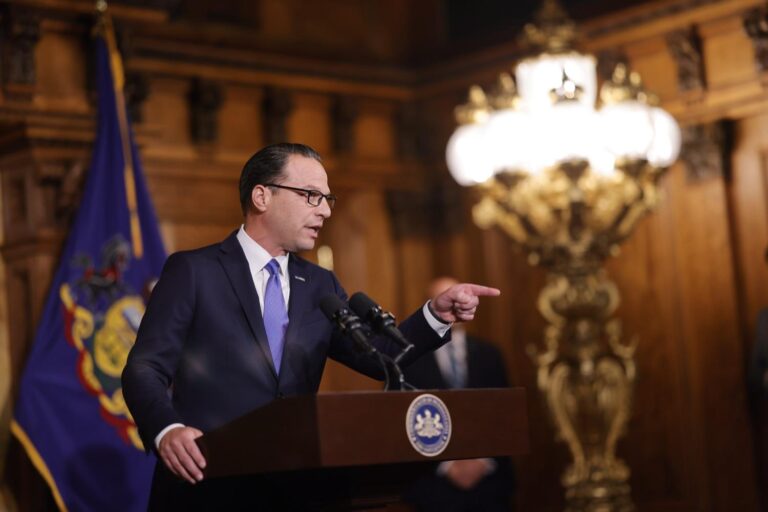Governor Shapiro Takes Legal Action Against Federal Education Funding Reductions
Governor Josh Shapiro has formally filed a lawsuit against the Trump administration, contesting the federal government’s decision to slash $230 million from Pennsylvania’s education budget. This substantial funding cut threatens to dismantle vital programs that serve disadvantaged students statewide, including special education, school nutrition initiatives, and after-school enrichment activities. The governor’s legal challenge argues that these reductions breach federal statutes and endanger the state’s commitment to equitable education.
Key issues highlighted in the lawsuit include:
- Disproportionate effects on economically disadvantaged and rural school districts
- Endangerment of support services for students with disabilities
- Potential increases in student-to-teacher ratios and diminished educational materials
- Noncompliance with federal mandates ensuring fair distribution of funds
| Funding Area | Amount Reduced | Program Impacted |
|---|---|---|
| Special Education | $85 million | Support for students with disabilities |
| School Nutrition | $70 million | Free and reduced-price meal programs |
| After-School Initiatives | $40 million | Student enrichment and safety programs |
| Title I Grants | $35 million | Assistance for low-income students |
Consequences of Federal Funding Cuts on Pennsylvania’s Educational Landscape
The abrupt $230 million reduction in federal education funding has sent ripples through Pennsylvania’s public school system, threatening the sustainability of programs essential to student success and well-being. Schools are now grappling with the prospect of scaling back critical services such as special education, extracurricular activities, and mental health support. Educators warn that these cuts could lead to overcrowded classrooms, fewer learning materials, and the elimination of after-school programs that are crucial for student engagement and safety. The blow is particularly harsh for districts already facing financial hardships.
District leaders have identified several areas at risk due to the funding shortfall:
- Special Education: Cuts to specialized personnel and support services
- STEM and Arts Education: Suspension or termination of programs in multiple districts
- Student Mental Health Services: Reduced access to counseling and psychological support
- Technology Investments: Postponement of upgrades and maintenance of educational technology
| Program | Current Funding | Projected Reduction | Expected Impact |
|---|---|---|---|
| Special Education | $85 million | $20 million | Fewer staff and longer wait times for services |
| Arts & STEM | $60 million | $15 million | Programs halted in over 10 districts |
| Student Counseling | $30 million | $10 million | Reduced counseling hours and availability |
| Technology | $55 million | $5 million | Delays in essential upgrades and repairs |
As Pennsylvania pursues legal remedies to recover these funds, educators and families remain concerned about the long-term repercussions on educational equity and student achievement throughout the state.
Legal Foundations of Pennsylvania’s Challenge to Federal Education Funding Cuts
Governor Shapiro’s lawsuit contends that the Trump administration’s decision to withhold $230 million in federal education aid violates the Elementary and Secondary Education Act (ESEA) and other federal statutes designed to protect education funding. The complaint argues that the administration failed to follow legally mandated funding formulas and lacked congressional approval for such drastic budget reductions. Legal representatives for Pennsylvania emphasize that these cuts disproportionately harm programs serving low-income and special-needs students, undermining federally guaranteed protections.
The state’s legal arguments focus on several critical points:
- Statutory Noncompliance: The cuts contravene federal laws guaranteeing specific funding levels.
- Discriminatory Consequences: The reductions disproportionately affect marginalized student groups.
- Procedural Deficiencies: The administration failed to provide adequate notice or justification before implementing cuts.
- Threat to Federal-State Relations: The unilateral action risks eroding trust and cooperation between federal and state education authorities.
| Legal Claim | Details |
|---|---|
| Violation of Federal Statutes | Contradicts ESEA funding requirements |
| Executive Branch Overreach | Budget cuts made without Congressional approval |
| Insufficient Process | Lack of proper notification to affected states |
| Equity Violations | Disproportionate impact on vulnerable populations |
Strategies for Policymakers to Secure and Strengthen Education Funding
Ensuring the stability and adequacy of public education financing requires policymakers to adopt robust and sustainable funding frameworks that reflect the true costs of delivering high-quality education. This includes building state-level financial reserves dedicated exclusively to education, which can buffer against unpredictable federal funding changes. Enhancing transparency and accountability in the allocation and use of education funds will foster public confidence and help identify opportunities for more efficient resource deployment. Strengthening collaboration among federal, state, and local entities is essential to develop cohesive strategies that prevent sudden funding disruptions affecting schools and students.
Additional recommended actions include:
- Creating legally binding protections to shield critical education grants from arbitrary cuts
- Enacting legislation that guarantees minimum funding levels for districts serving high-need populations
- Encouraging innovative partnerships between public agencies and private organizations to supplement funding
- Regularly updating funding formulas to reflect demographic shifts and economic realities
| Policy Initiative | Anticipated Outcome |
|---|---|
| Education Reserve Funds | Provides budget stability during federal funding fluctuations |
| Minimum Funding Guarantees | Protects resources for underserved communities |
| Transparency Measures | Enhances public trust and resource efficiency |
| Public-Private Collaborations | Expands available funding and resources |
Final Thoughts on Pennsylvania’s Education Funding Dispute
As the lawsuit progresses, Governor Shapiro’s challenge highlights a broader national debate over federal education funding and the balance of power between state and federal governments. With millions of dollars at stake, the case could set a significant precedent affecting not only Pennsylvania but other states confronting similar funding reductions. Observers, including the Biden administration and education policy experts, are closely monitoring the situation, which underscores ongoing tensions surrounding the distribution of pandemic-related federal aid and the future of equitable education financing.








